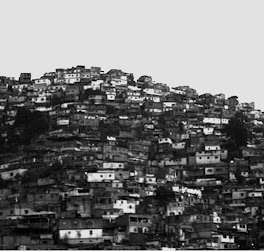Esta es una propuesta de diseño elaborado por una amiga mía para la ciudad antigua del Medina Fez. La parte que nos puede interesar es como se parte de quebradas y ríos de agua que operan como cloacas y recuperar estos espacios como punto de desarrollo económico, social y cultural.
From Open Air Sewer to Multi-Performative Infrastructure: River Restoration in the Medina of Fez, Morocco
Abstract of paper to be presented by Aziza Chaouni, University of Toronto, and Takako Tajima, Landscape Architect, at the conference "Fez, Morocco, Crossroads of Knowledge and Power: Celebrating 1,200 Years of Urban Life"
With much of the global production of manufactured goods shifting to just a handful of countries, cities whose waterfronts were occupied with industrial uses for a greater part of the last century are in the process of reprogramming those same waterfronts with very different uses - parks, cultural institutions, tourism, shopping, and leisure. In such cases, rivers as urban infrastructure is re-envisioned and often serve as catalysts for restructuring and redefining existing city fabrics. The transformation of riverfronts in Rust Belt cities in the United States such as Pittsburgh and in Germany’s Ruhr River Valley is well documented. However, scholarship is scarce on reclamation and rehabilitation of urban rivers in cities in developing countries where issues such as the scarcity of open space, overcrowding, poverty, and the lack of measures to curb pollution or the destruction of existing structures seem intensified.
The medina of Fez, Morocco’s most famous medieval walled city, emerged in 789 AD as two separate nuclei on either sides of a free flowing river. In time, the two sides grew and fused into one. The river serving as the city’s spine also emerged as an integral element to its urbanism – giving Fez the appellation “The City of a Thousand Fountains”. However, over the course of centuries, the city’s dependence on the river to support an ever growing population and a flourishing leather tanning industry severely impacted water quality. By the 1950’s the river was considered a sewage channel rather than a river (aptly named Oued Boukrareb, the river of trash) and half of the river through the medina was paved over with little opposition, ironically, allowing for the introduction of vehicular access in a city with one of the most cohesive pedestrian networks in the world. The erasure of the river was furthered in 2004 and completed in 2007 despite the city’s designation as a UNESCO World Heritage site in 1981.
Suggesting that rivers as a form of urban infrastructure possess the potential to stitch or blend incongruities between contemporary urbanism and a historic urban fabric, we use Fez, Morocco as a case study to envision a strategic plan that addresses not only the ecology of a river but the social and economic concerns of a city. This paper will propose measures for restoring an urban river that conciliates the needs of a 21st century population while maintaining the integrity of a UNESCO World Heritage designation. Working with the RADEEF (City of Fez Department of Water and Power) and through a detailed analysis of the medina and its broader urban and ecological context, we choreographed a phased implementation strategy for enhancing water quality, remediating contaminated sites, creating open space, and building on existing resources for economic development. We argue that approaching issues from a landscape perspective - combining solutions to infrastructural problems with solutions to social and economic concerns incrementally - could be a powerful method in developing countries where resources are scarce and the demands for basic needs are immediate.
2.05.2009
Suscribirse a:
Comentarios de la entrada (Atom)

No hay comentarios.:
Publicar un comentario